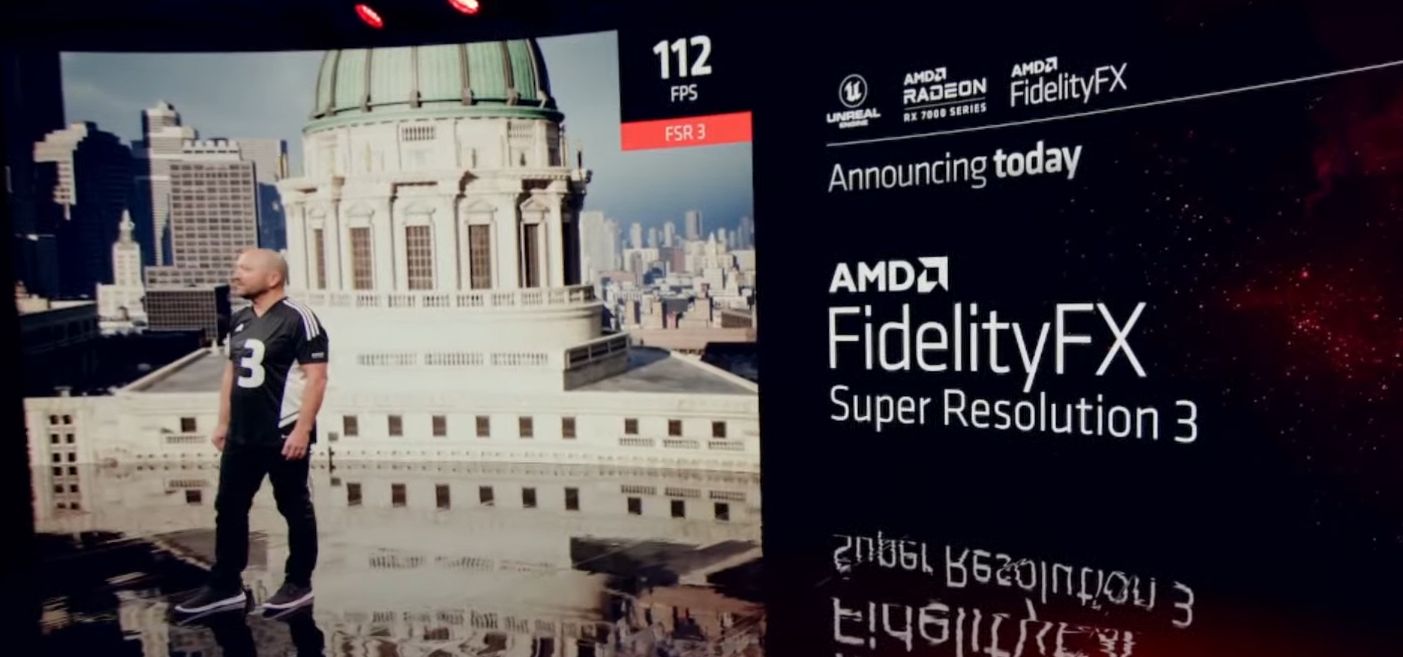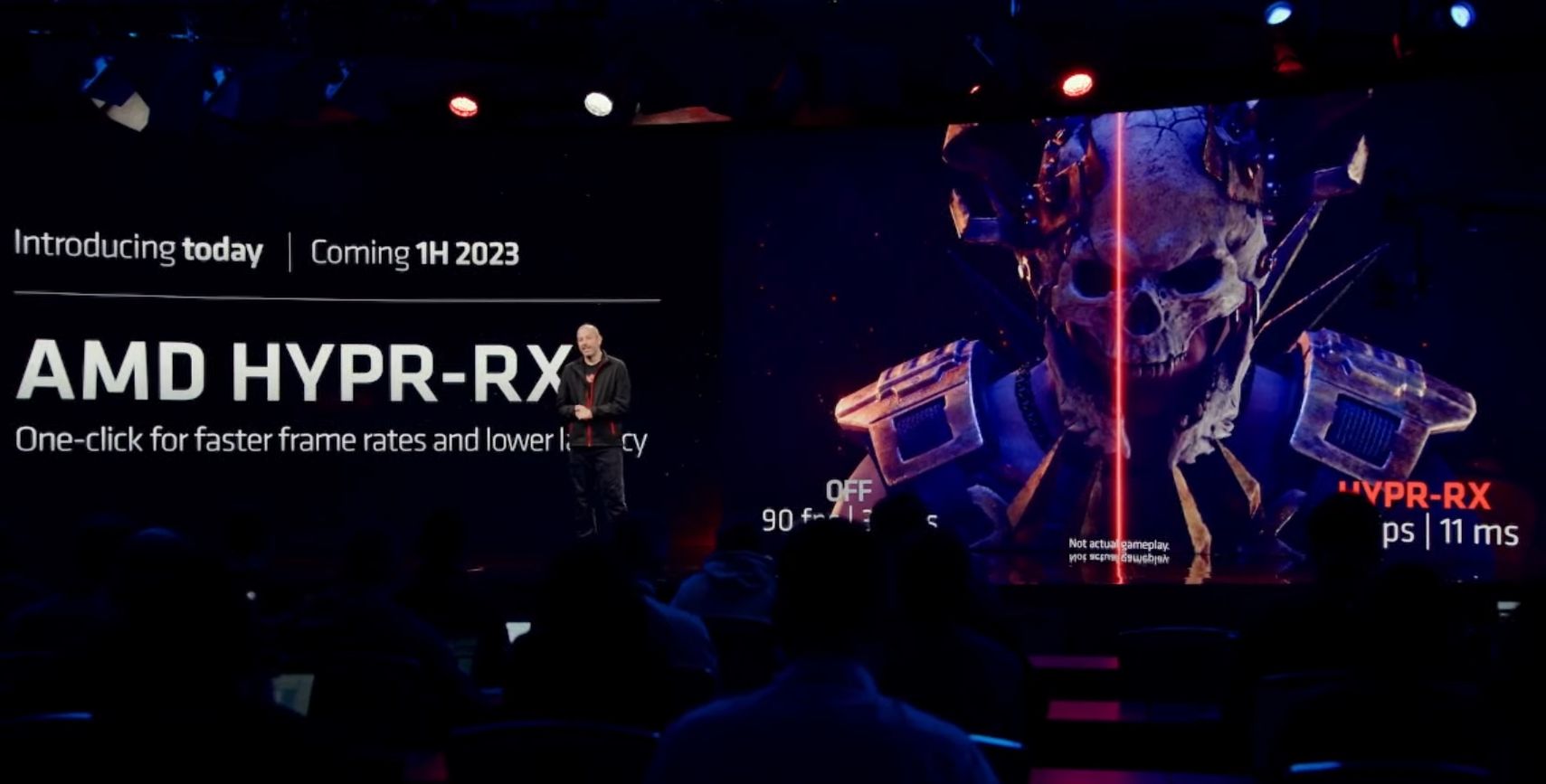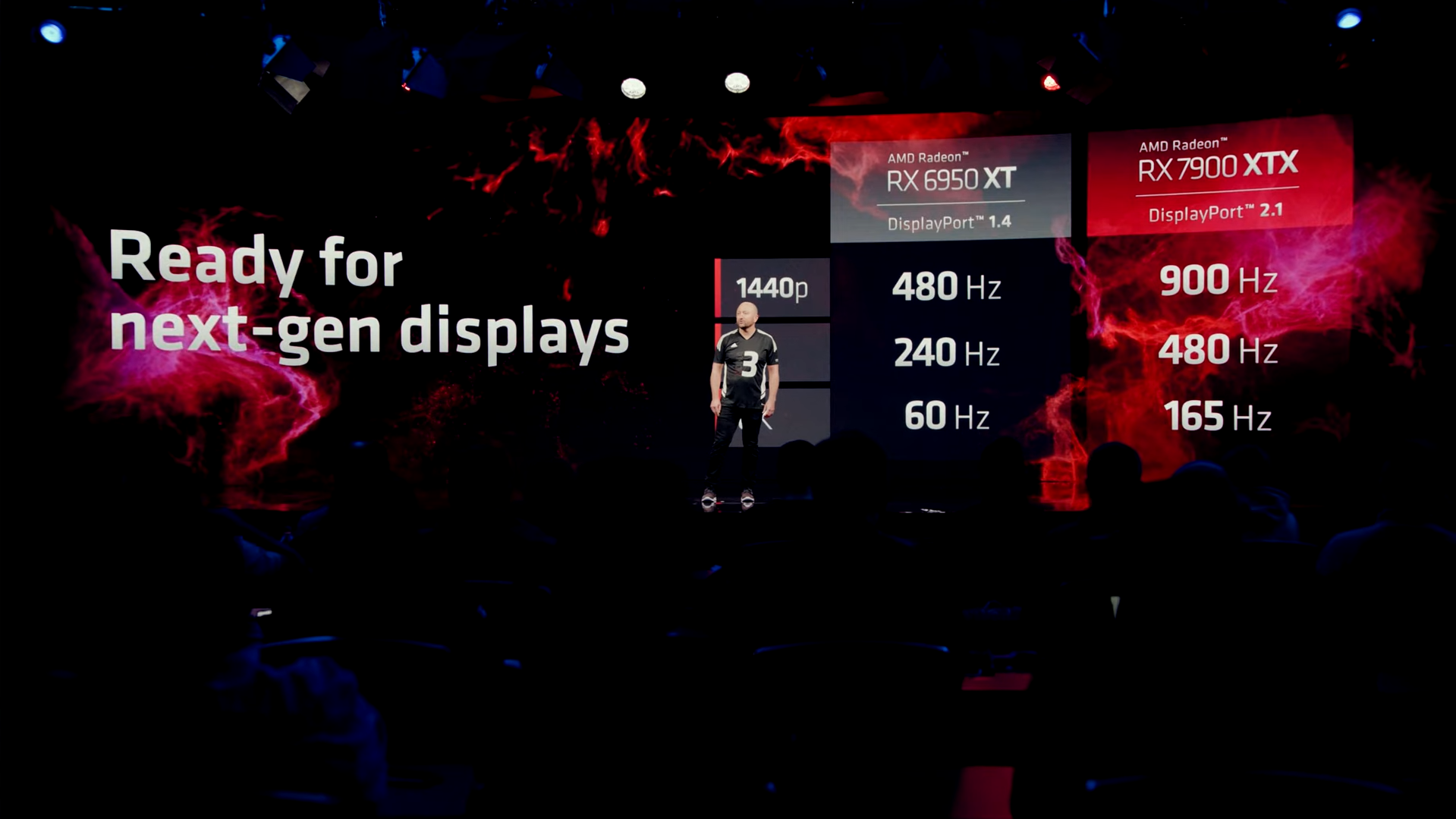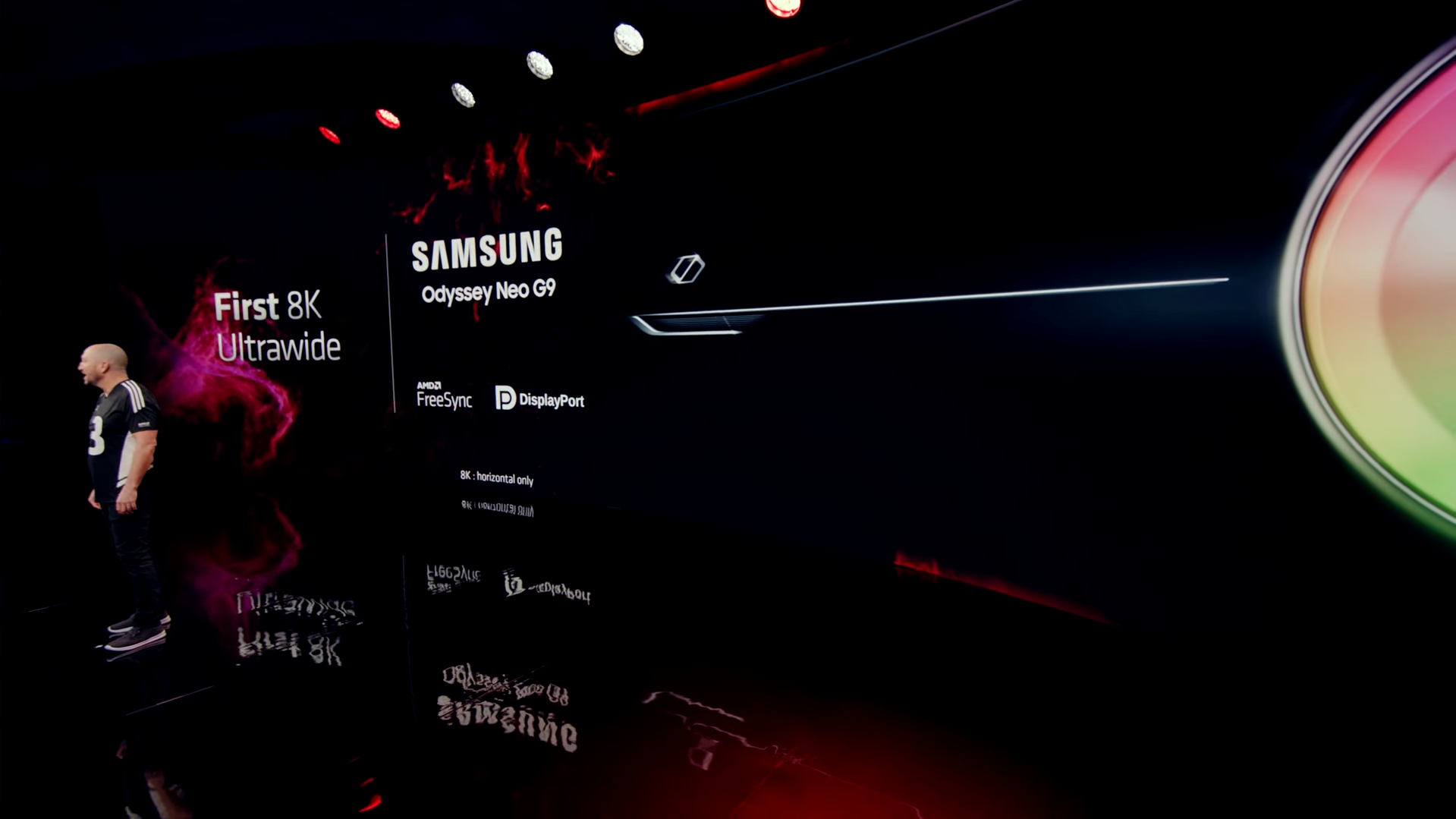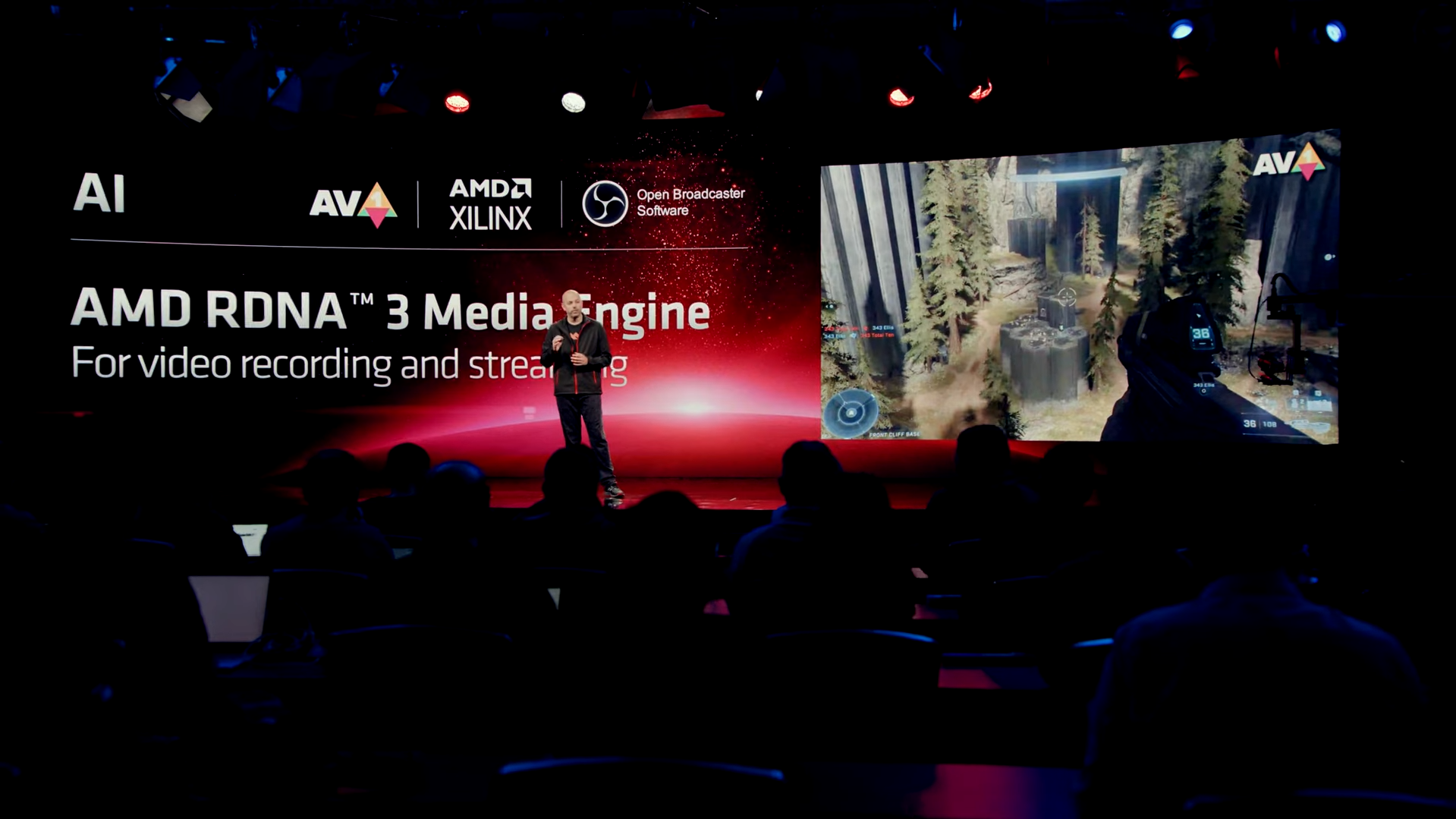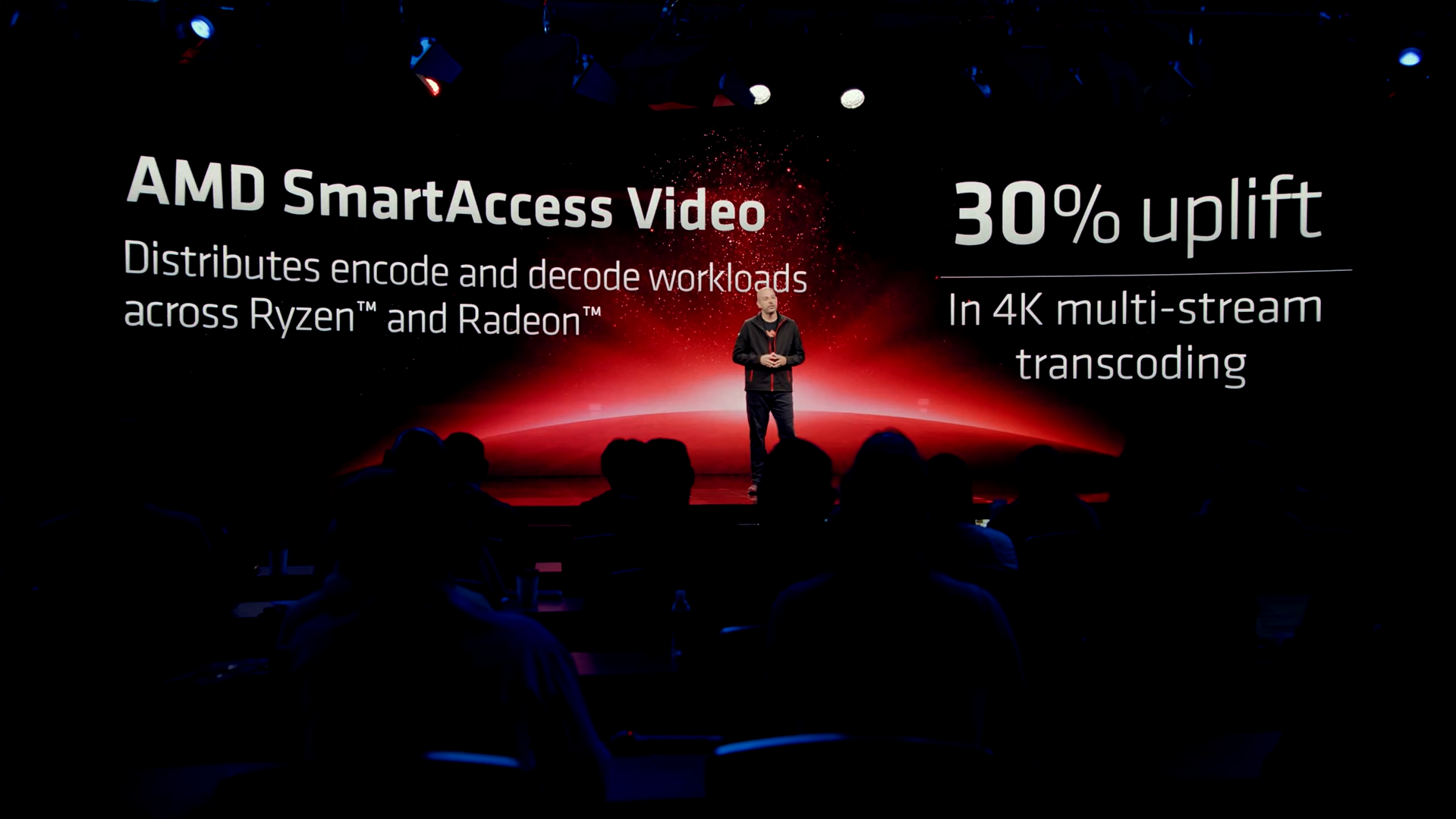FSR 3.0
AMD’s FSR 3.0 will make use of the new ‘Fluid Motion Frame‘ technology doubling your FPS. This sounds quite a lot like DLSS 3.0 and we suspect it may make use of similar ‘frame generation’ technology. Unlike NVIDIA, AMD did not detail this technology by going into the specifics. Therefore, one can only guess as to how it works. For some reference, AMD showcased an Unreal Engine 5 demo outputting 60FPS with FSR 2.0 but as soon as FSR 3.0 was turned on, the FPS jumped to an average of 112FPS, in-line with the 2x increase metric. FSR 3.0 will be available sometime in 2023, and that’s about all we know.
HYPR-RX
In addition to FSR 3.0, we also saw a new technology called ‘HYPR-RX‘. The AMD HYPR-RX is an all-encompassing tool for boosting frames and reducing latency. This is AMD’s one-button solution and a possible competitor to NVIDIA’s Reflex. It essentially combines the abundance of different technologies and tools available in the Adrenaline driver suite into one to provide the best performance. For example, in Dying Light 2, using this technology netted the game 85% more FPS along with one-third of the latency being completely gone, from 30ms down to just 11ms. As per AMD, HYPR-RX will be available in early 2023.
DisplayPort 2.1 & The World’s First 8K Ultrawide Monitor
AMD’s RDNA3 will arrive with support for DisplayPort 2.1. In contrast, NVIDIA’s Ada Lovelace supports DP 1.4 which limits extremely high refresh rate gaming at high resolutions. DisplayPort 2.1. The RX 7900 XTX can support an insanely high 900Hz at the 1440p resolution, though we are yet to see such displays. In fact, even at 4K, the inclusion of DP 2.1 allows RDNA3 to enable gaming at 480Hz. AMD also stated that Samsung will launch the ‘World’s first 8K Ultrawide Odyssey Neo G9‘ gaming monitor sometime in 2023. More information about that will be revealed at CES 2023.
RDNA3 Media Engine & AV1 Support
Following the AV1 hype-train, the RDNA3 Media Engine supports AV1 encode akin to NVIDIA’s Lovelace. The AV1 encoder is up to 7x faster than software even at ultra-high resolutions. Support for this new Media Engine will be available in the upcoming versions of OBS, Handbrake and Adobe Premiere Pro.
SmartAccess Video
AMD’s new Smart Access Video is a content creator’s haven. This technology essentially distributes video compression workloads across your Radeon GPU and Ryzen CPU. Team red has promised a 30% uplift in 4K multi-stream transcoding on using this new feature.
2×8 Pin Connectors
The RX 7900 XTX will not come with the new PCIe Gen 5.0 connector, rather AMD has decided to stick with the typical 8-pin solution. The 12VHPWR (16-pin connector) has been extremely controversial after reports of these adaptors melting surfaced. This is important because even though this connector is a massive leap, it has a faulty design and uses sub-par materials.
RDNA3
The RDNA3 microarchitecture offers a major leap in performance along with increased efficiency across the board. RDNA3 features the next generation of Infinity Cache, a modified Graphics Pipeline along with a re-architectured Compute Unit. All such improvements generation on generation are tipped to offer a massive leap not just in raw vectorized performance, but also in ray tracing workloads. While AMD only revealed two of their top of the line GPUs today, the rest of the lineup has leaked extensively. We know the company is planning at least a couple more models that will slowly drizzle down the line in the coming months. Check out our coverage of the actually-announced RX 7900 XT and RX 7900 XTX here.
